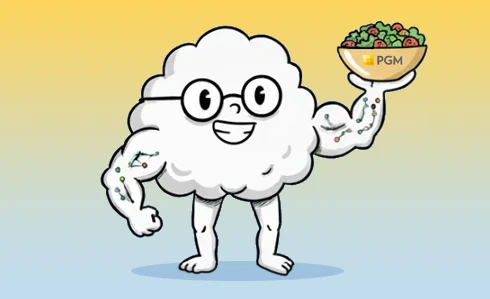Email remains one of the most effective channels for building connections and driving conversions.
A survey from eMarketer reveals that email marketing drives 25% of the overall revenues from those companies surveyed. Additionally, the median email marketing ROI is 122%. That is four times higher than any other digital marketing channel.
And consumers who purchase products through email spend 138% more than those that don’t receive email offers.
However, like every powerful tool, your email strategy requires regular maintenance to remain sharp and effective.
One often overlooked yet vital aspect of email marketing is the practice of email list cleaning, also known as list hygiene. It’s a common misconception that the more subscribers you have, the higher your engagement and conversion rates will be.
The truth, however, is that an outdated or dirty email list can drag down your campaign’s effectiveness.
What is Email List Cleaning?
Email list cleaning (or scrubbing) involves removing inactive, irrelevant, or non-responsive subscribers from your list. This process ensures that your email campaigns target those genuinely interested in your content, product, or service.
As part of this process, incorrect emails can be fixed as well as missing emails appended to your database.
Why is Email List Cleaning Important?
Boost Engagement and Deliverability Rates
An unclean email list often includes many inactive subscribers. Sending emails to these non-responsive addresses can significantly lower your open and click-through rates.
Moreover, internet service providers (ISPs) monitor these engagement metrics to determine the deliverability of your emails. A clean list ensures higher engagement, which in turn improves the chances of your emails landing in the recipient’s inbox rather than the dreaded spam folder.
Reduce Costs
Most email marketing platforms charge based on the number of subscribers or the volume of emails sent. Why pay for subscribers who aren’t engaging with your content? Cleaning your list ensures you’re getting the most value for your investment.
Preserve Your Brand Image
Repeatedly emailing uninterested parties can lead to higher unsubscribe rates or worse, increase the chances of being marked as spam. This can tarnish your brand’s image and diminish trust among potential customers. A clean and up-to-date email list ensures your content is reaching those genuinely interested in hearing from you.
Decrease Bounce Rates
A ‘bounce’ occurs when an email fails to deliver. There are two types: soft bounces (temporary issues like a full inbox) and hard bounces (permanent problems like invalid email addresses). Continuously sending emails to invalid addresses can hurt your sender reputation. Regular list cleaning can help identify and remove these addresses, safeguarding your reputation.
Avoid Spam Traps
ISPs use spam traps to catch malicious senders, but even legitimate marketers can unintentionally hit them. Email addresses that were once valid but have since been abandoned can be converted into spam traps. Sending emails to these addresses is a red flag, and cleaning your list can help you avoid this pitfall.
Gain Accurate Insights
An unclean list can skew your campaign metrics, making it challenging to gauge the true performance of your email marketing efforts. By ensuring your emails are sent to an engaged audience, you get a clearer picture of what’s working and what isn’t, allowing for more informed decision-making.
Enhance Personalization and Segmentation
With a cleaned list, you can better segment your subscribers based on their behavior, preferences, or other criteria. This allows for more targeted and personalized campaigns which drive higher engagement and conversion rates.
8 Email List Cleaning and Hygiene Tactics
1. Identify Inactive Subscribers
Segment subscribers who haven’t engaged with your emails in the past 6-12 months. Once identified, these subscribers should be approached with a re-engagement campaign, a last effort to reignite their interest.
2. Use Re-engagement Campaigns
Instead of instantly removing inactive subscribers, give them a chance to reconnect. Send a personalized email asking if they’re still interested in your updates. Offer exclusive content, discounts, or other incentives to encourage them to stay. If they remain unresponsive, it may be time to part ways.
3. Monitor Bounce Rates
Emails can ‘bounce’ for various reasons, from a recipient’s inbox being full (soft bounce) to the email address no longer existing (hard bounce). Work with an email hygiene partner to remove invalid or problematic email addresses from your list.
4. Implement Double Opt-In
This is a preventive measure that can save you a lot of cleaning effort down the line. When subscribers sign up, the double opt-in process sends a confirmation email, ensuring that the provided email address is valid and that the subscriber genuinely wishes to receive your content.
5. Regularly Remove Duplicate Addresses
Duplicated email addresses are a common issue, especially if you’re sourcing subscribers from multiple channels. Use a platform or email hygiene service that identifies and removes duplicates, so subscribers aren’t inundated with repetitive content.
6. Enable Easy Unsubscribing
While it may seem counterintuitive, simplifying your unsubscribe process is beneficial. Someone who wants to unsubscribe but can’t easily do so is more likely to mark your emails as spam, which can harm your sender reputation.
7. Leverage Email List Cleaning Services
An email list cleaning provider can identify and remove problematic email addresses. Investing in one of these solutions can be a game-changer, especially if you have a sizable subscriber list.
8. Segment and Personalize
Segmenting your list based on user behavior, preferences, or demographics, enables you to send content that’s more relevant to each group. This boosts engagement rates and reduces the chances of subscribers losing interest.




